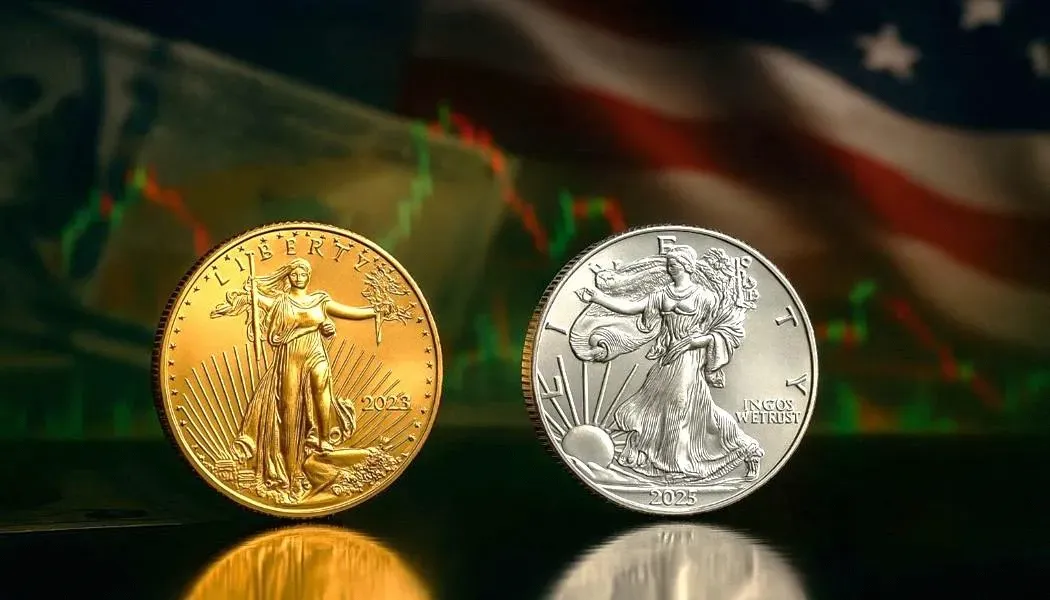
Global Currency Power: The Dollar’s Influence on Bullion Markets
The U.S. dollar stands at the center of the global economy — not only as America’s national currency but also as the world’s primary reserve currency. It serves as the standard unit for global trade, commodities pricing, and international transactions. This pivotal role means the dollar’s performance profoundly impacts the precious metals market, influencing the value of gold, silver, platinum, and palladium worldwide.
Because these metals are priced in U.S. dollars, any fluctuation in the dollar’s strength alters international buying power. A stronger dollar makes precious metals more expensive for overseas buyers, often leading to price declines, while a weaker dollar makes them more accessible, driving global demand.
For those monitoring the gold price today or seeking opportunities to buy gold bullion online, understanding the U.S. dollar’s movements is essential for identifying both entry points and long-term trends.
What Drives the Strength of the U.S. Dollar
The dollar’s value is influenced by a combination of economic, monetary, and geopolitical factors that interact across global markets. The most important include:
- Federal Reserve policy: Interest rate adjustments are among the strongest influences. Rising rates attract global investors, strengthening the dollar; lower rates typically have the opposite effect.
- Inflation and economic growth: Stable inflation and a strong GDP support a robust dollar, while high inflation or slow growth tends to weaken it.
- Trade balance and foreign demand: When global demand for U.S. assets and currency rises, the dollar gains strength.
- Global risk sentiment: In uncertain times, investors often seek the dollar as a “safe-haven” currency — even as others turn to gold.
The U.S. Dollar Index (DXY), which measures the dollar against major currencies like the euro, yen, and pound, often moves inversely to the gold price — highlighting the close correlation between currency strength and commodity values.
How a Strong Dollar Weighs on Precious Metals
A strong U.S. dollar typically puts short-term pressure on gold and silver prices. When the dollar rises, international investors must spend more of their own currency to purchase dollar-priced assets, often reducing global bullion demand.
Historical periods such as 2014 and 2018 show that dollar rallies frequently coincide with subdued precious metals prices. During these times, some investors pivot toward dollar-backed securities or U.S. bonds instead of bullion.
Still, this pattern isn’t absolute. Gold can maintain strength even during dollar rallies when other forces — such as geopolitical instability, inflation expectations, or economic uncertainty — drive safe-haven buying.
When a Weak Dollar Fuels Bullion Gains
Conversely, a declining dollar often sparks renewed enthusiasm in the precious metals market. When the currency weakens, global investors find gold, silver, and platinum more affordable, while domestic buyers turn to metals as a hedge against inflation.
This effect was especially visible during the 2009–2011 gold bull market and again in 2020–2021, when the dollar fell sharply and gold reached record highs.
In essence, a weak dollar environment often supports long-term rallies in gold and silver — making it a favorable backdrop for both investors and collectors.
Economic and Geopolitical Influences
Beyond central bank policy, numerous external forces shape the relationship between the U.S. dollar and precious metals prices:
- Global tensions: Wars, political instability, and trade disputes drive investors toward tangible assets like gold.
- Energy and commodity prices: Rising oil and energy costs can fuel inflation, undermining the dollar while supporting metals.
- Central bank activity: Many nations diversify their reserves by purchasing gold, reducing dependence on the dollar.
- Supply chain and trade disruptions: These limit industrial demand for the dollar and simultaneously lift investor demand for metals.
Together, these factors demonstrate why the gold and silver markets so often serve as a real-time reflection of global confidence in the dollar.
Investor Strategy: The Dollar–Gold Connection
For modern investors, understanding the interplay between currency trends and bullion prices is key to successful portfolio management.
Consider the following:
- Monitor the U.S. Dollar Index (DXY) for directional signals.
- Follow Federal Reserve statements for upcoming policy shifts.
- Track inflation data, trade reports, and central bank gold activity.
- Recognize that strong-dollar phases often present short-term buying opportunities when metals temporarily dip.
History has shown that prolonged periods of dollar weakness often coincide with powerful precious metals bull markets — the perfect time to buy silver and gold as part of a strategic accumulation plan.
Using Bullion Hunters to Compare Precious Metals Prices
At Bullion Hunters, investors gain a competitive edge by using powerful price comparison tools designed to track and evaluate live bullion pricing across top U.S. dealers. Whether you’re searching for the lowest premium on a 1 oz Gold American Eagle, the best deal on Silver Maple Leafs, or comparing gold bar prices by weight, Bullion Hunters helps you identify the most cost-effective options instantly.
Our platform aggregates real-time market data, allowing you to shop smart, save time, and make informed precious metals purchases with confidence. In a market influenced by U.S. dollar volatility, having a precise, side-by-side comparison of prices can make all the difference in your investment performance.
Turning Dollar Movements Into Bullion Opportunities
The U.S. dollar remains one of the most influential forces in global finance, and its every movement ripples through the precious metals market. A stronger dollar may cool prices temporarily, but history repeatedly shows that each correction creates new opportunities for accumulation.
For investors focused on wealth preservation, inflation protection, and diversification, metals remain a cornerstone of long-term strategy. By pairing this timeless investment approach with Bullion Hunters’ advanced price comparison tools, you can capture the best deals in the market while staying ahead of shifting economic tides.
Compare, invest, and stay informed — with Bullion Hunters as your trusted guide in the global bullion landscape.
Another article that may interest you:
Fractional vs 1 oz Gold Coins: Which Is Best for Investors?
